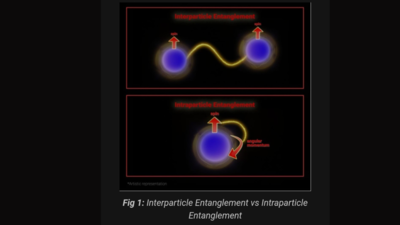ARTICLE AD BOX

BENGALURU: Indian researchers have found that quantum noise — the random disturbances often seen as a threat to fragile quantum systems — can sometimes help, rather than harm. This surprising insight could change how scientists build quantum technologies.At the core of the study is quantum entanglement, the phenomenon Albert Einstein once famously called “spooky action at a distance.” In normal circumstances, quantum noise is seen as the enemy of entanglement. It causes decoherence, where the special link between particles breaks down.However, scientists at the
Raman Research Institute
(
RRI
), Bengaluru, working with collaborators from IISc, IISER-Kolkata and the
University of Calgary
, have discovered a twist. A lesser-known form of entanglement, called intraparticle entanglement, where different properties of the same particle are entangled, can actually survive, revive, and even be created by noise.“Noise does not always destroy quantum correlations. Under the right conditions, it can build them too,” said Animesh Sinha Roy, lead author and post-doctoral fellow at RRI. The team derived an exact mathematical formula to predict how this intraparticle entanglement behaves in the presence of noise, specifically amplitude damping, which is similar to energy loss in quantum systems.
When the same tests were applied to the usual interparticle entanglement between two separate particles, the entanglement simply decayed. No revival or creation was seen.This robustness of intraparticle entanglement under noise could help scientists develop more stable and practical quantum systems, useful for technologies like quantum computing and communication. “Our next step is to build an experiment using single photons to explore this further,” Prof Urbasi Sinha, head of the Quantum Information and Computing lab at RRI, said.The team’s findings, published in Frontiers in Quantum Science and Technology, used the Global Noise Model, where the particle is treated as a whole. This approach is more realistic because, in real life, all parts of a particle interact with the same environment.The work is part of the India-Trento Programme on Advanced Research and is supported by the National Quantum Mission.
Prof Dipankar Home
from the Bose Institute, Kolkata, called the research a breakthrough, noting that it opens new possibilities for building quantum technologies that can work in noisy conditions.



.png)
.png)
.png)
















 12 hours ago
4
12 hours ago
4









 English (US) ·
English (US) ·